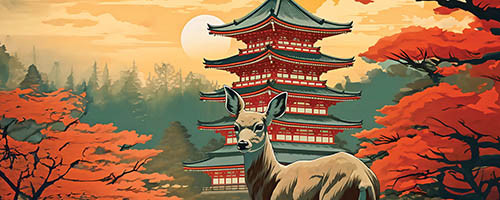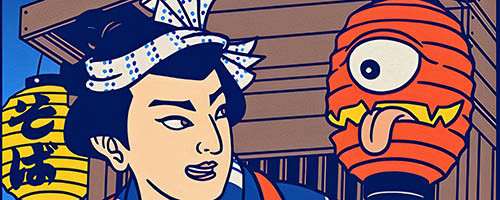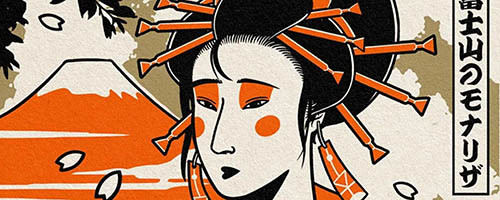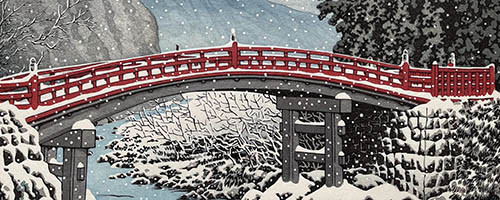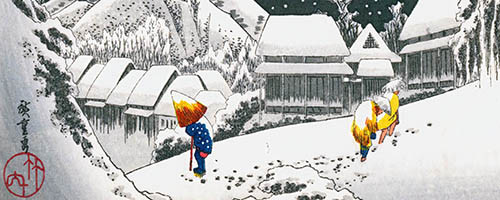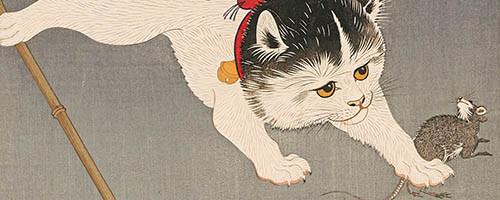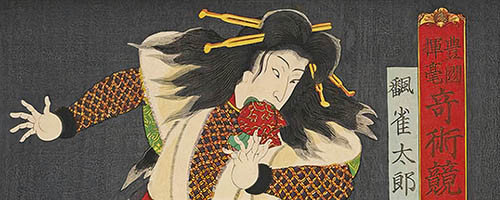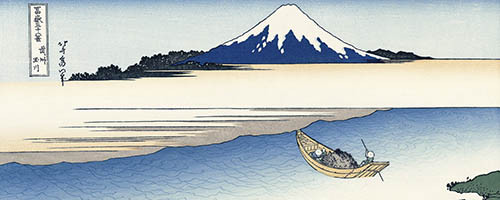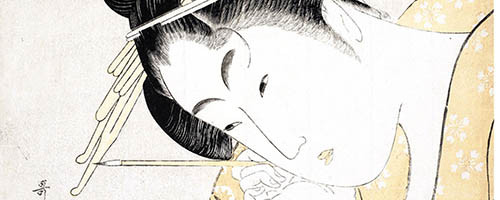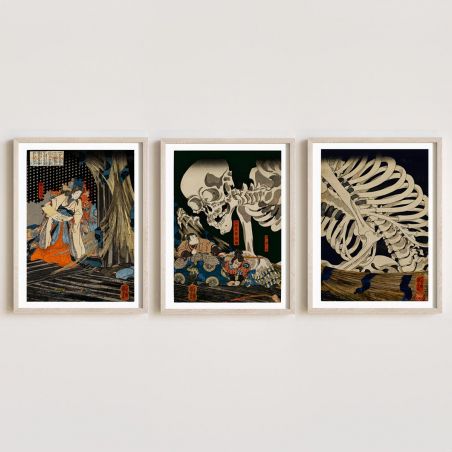Utagawa Kuniyoshi

Son of a silk dyer, he was born in 1797 under the name of Yoshizo. In his youth, he probably assisted his father, providing drawings of the pieces to be dyed, and thus naturally turned to the art world.
He first studied with Kuninao, and some of his works attracted the attention of one of the great Japanese masters of printmaking, Toyokuni, who admitted him to his studio in 1811, and of whom he became one of the main students. He remained an apprentice until 1814, when he took the name Kuniyoshi and established himself as an independent artist.
Like other artists of the Utagawa school, he began by making prints for theaters, but did not meet with public success. He then lived several difficult years, having to go, to earn a living, to repair and resell used tatami.
He met by chance Kunisada Utagawa, who had been his classmate and was then living a prosperous life. Believing that his own artistic talent was superior to Kunisada's, he was encouraged to redouble his efforts. Kunisada and Kuniyoshi, between whom there was no resentment, were later to collaborate on several series.
He produced several well-received heroic triptychs, and in 1827 he began the series that would bring him recognition: the Suikoden, or Hundred and Eight Chinese Heroes. Success followed in several areas: in the early 1830s he produced excellent landscapes and in the 1840s numerous triptychs of bijin and heroes.
He is also known for his drawings of cats, which were his favorite animals. A drawing by his student Kyosai shows Kuniyoshi's studio full of cats. Kuniyoshi himself drew pictures of them which show an amazing sympathy with his cats, and he willingly depicted them in the corners of his prints under the slightest pretext.
In 1842, the Tenpo reform, intended to enforce traditional morality in the world of theater and fine arts, forbade images representing courtesans, geishas or actors. Although he was arrested, Kuniyoshi got off with a fine.
In the 1850s, the quality of his works began to decline. The great earthquake of 1855, after which he returned home late and was given up for dead by his family and workshop members, marked the end of his great period. Suffering from illness and depression, he produced little from then on. He died in Edo in 1861 (source wikidépia)


